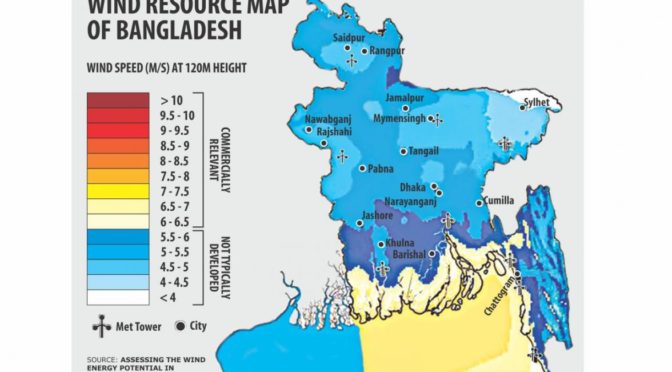Bangladesh, a country with a rapidly growing economy and a population of over 160 million, is facing an increasing demand for energy. The country’s energy infrastructure is primarily dependent on fossil fuels, with natural gas being the primary source of electricity generation. However, the depletion of natural gas reserves and the environmental impact of fossil fuel consumption have prompted the government to explore alternative sources of energy. One such promising alternative is offshore wind energy, which has the potential to revolutionize the energy landscape in Bangladesh.
Offshore wind energy is a form of renewable energy that harnesses the power of wind to generate electricity through wind turbines installed in the ocean. This form of energy generation has gained significant attention worldwide due to its numerous advantages over traditional energy sources. Offshore wind farms can generate electricity at a large scale, with minimal impact on the environment and without occupying valuable land resources. Moreover, the strong and consistent winds over the ocean provide a reliable source of energy, which can help to reduce the country’s dependence on imported fossil fuels.
Bangladesh has a vast coastline of about 710 kilometers along the Bay of Bengal, which offers immense potential for offshore wind energy generation. According to a study conducted by the World Bank, the country has the potential to generate up to 30 gigawatts (GW) of electricity from offshore wind energy. This is more than double the current installed capacity of the national power grid, which stands at around 13 GW. Harnessing this potential could significantly contribute to meeting the country’s growing energy demand, which is expected to reach 34 GW by 2030.
The government of Bangladesh has already taken steps to explore the potential of offshore wind energy. In 2018, the Sustainable and Renewable Energy Development Authority (SREDA) signed a memorandum of understanding with the Danish Energy Agency to collaborate on the development of a roadmap for offshore wind energy in Bangladesh. This partnership aims to assess the technical and economic feasibility of offshore wind energy projects, as well as to identify potential sites for wind farms along the country’s coastline.
However, there are several challenges that need to be addressed before offshore wind energy can become a game changer for the energy market in Bangladesh. One of the primary challenges is the high upfront cost of setting up offshore wind farms. The installation of wind turbines in the ocean requires specialized equipment and skilled labor, which can be expensive. Moreover, the maintenance and operation of offshore wind farms can also be challenging due to the harsh weather conditions and remote locations.
Another challenge is the lack of a supportive regulatory framework and financial incentives for the development of offshore wind energy projects. The government needs to create a conducive environment for private sector investment in this sector by offering tax breaks, low-interest loans, and other financial incentives. Additionally, the development of a robust grid infrastructure is essential to ensure the efficient transmission and distribution of electricity generated from offshore wind farms.
Despite these challenges, the potential benefits of offshore wind energy in Bangladesh cannot be ignored. The successful implementation of offshore wind energy projects can help the country to diversify its energy mix, reduce its dependence on imported fossil fuels, and contribute to its commitment to reduce greenhouse gas emissions under the Paris Agreement. Moreover, the development of the offshore wind energy sector can create new job opportunities and stimulate economic growth.
In conclusion, offshore wind energy holds great promise for revolutionizing the energy landscape in Bangladesh. By addressing the challenges and harnessing the potential of this renewable energy source, the country can move towards a more sustainable and secure energy future.


